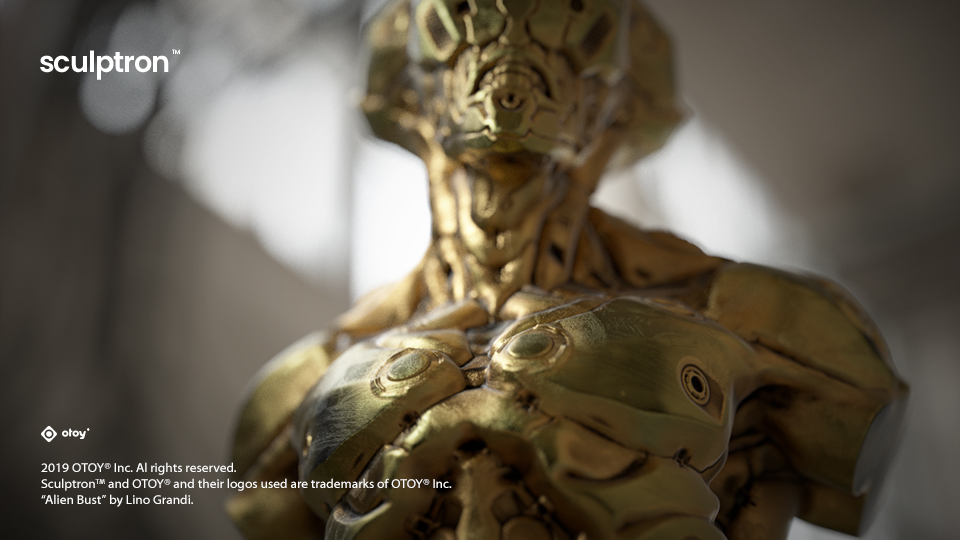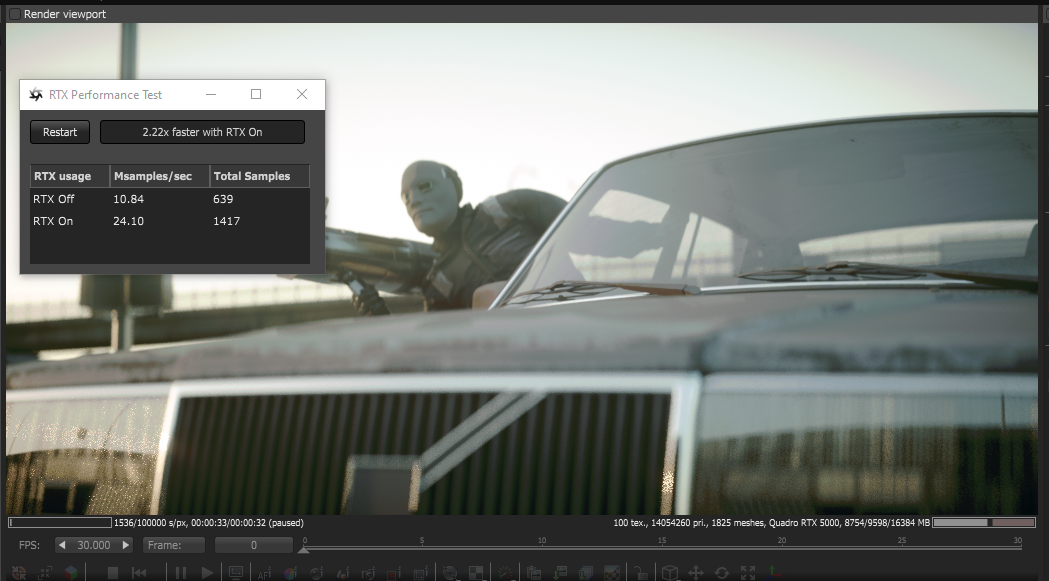OTOY® announces the next-generation of the industry’s first and fastest unbiased GPU render engine – available as a public preview today – with completely rewritten and optimized Optix 7 RTX acceleration, ACES support, native Maxon C4D GPU noises and much more.
Los Angeles, CA. – Nov 27th, 2019 — OTOY, Inc. is proud to release the first public preview of OctaneRender 2020™, introducing dozens of advancements for GPU rendering workflows across film, television, motion graphics, architecture and design.
New Octane 2020 features include up to 2-5x speed gains using OptiX 7™ RTX acceleration for scenes with heavy instancing and scattering, native GPU Maxon C4D noises for textures and volumes, ACES and color display pipeline support, Houdini 18 Solaris Hydra viewport integration, a new spectral Hosek-Wilkie sky system, advanced camera split-focus diopter and optical vignetting tools, granular artist control for rounded edges and a fully curated library of OSL shaders through LiveDB.
Octane Enterprise and Studio Subscriptions include all DCC plug-ins:
![]()
Octane subscriptions include unlimited access to the Octane ecosystem, including all Octane DCC plug-ins, ORC and RNDR cloud rendering and much more – starting at just 14.95 € a month*:

Octane 2020 also refines hundreds of new features built on top of last year’s pioneering release of Octane 4, including: NV Link support, Spectral Random Walk SSS, Layered Materials, revamped AI volumetric denoising, Octane Spectron™ and Vectron™ procedural lighting and geometry primitives and fast GPU Cryptomatte support.
The OctaneRender 2020 Preview is available today as part of Studio and Enterprise subscriptions, and also as a boxed licence upgrade for perpetual licence holders.
Public Sculptron Preview
Today OTOY is releasing an early access preview of Sculptron™, a new intuitive GPU based real-time mesh sculpting tool available to Octane users. Sculptron enables Octane users to import and animate meshes, apply procedural textures, and convert meshes into SDF or OpenVDB volumes for fast volumetric animations like custom cloud volumes.
Overview of Features in Octane 2020
RTX Acceleration with OptiX 7
Octane RTX hardware acceleration brings 2-3x render speed increases to NVIDIA® raytracing GPUs, with multi-GPU support. RTX acceleration is scene dependent, but speed gains are increased in complex, heavy scenes. You can try out RTX OctaneBench® here.
Spectral Random Walk SSS and Hair Material
A new Random Walk medium enables users to create ultra realistic skin and other absorption / scattering materials in Octane. With Random Walk SSS and Octane’s new Spectral Hair Material, you can easily create photorealistic digital characters.
The Spectral Hair Material enables different coloring modes for hair, and also multiple roughness parameters for different scattering behavior along a hair strand.
Layered Materials
The new layered material system allows you to construct complex materials with new nodes for: layered material, diffuse layer, specular layer, sheen layer, metallic layer, and layer group nodes. With layered materials, Octane empowers you to recreate complex materials in a physically-based manner as opposed to manually mixing materials together.
Other Key Features Include:
- NVLink: Gives you the ability to effectively double GPU VRAM by combining two cards into one pool of fast shared (not mirrored) memory for complex renders.
- New Rounded Edges: simplifies the process of importing and converting objects in Octane with a robust workflow for creating ultra-realistic corner and bevel details
- Vectron™: Octane Vectron (Vector-Polygon) provides infinite procedurally generated scenes, volumes, and geometry which bypass meshes and volumes. With Vectron you can create procedurally generated scenes entirely on the GPU without using GPU VRAM and with zero memory footprint. You can now render triangle-free geometry using all of Octane’s built in OSL and texture shaders and more.
- Spectron™ Procedural Volumetric Lights: allow you to create procedurally driven volumetric lighting – like spot lights – with blockers, barn doors, gels and more.
- OSL and procedural vertex displacement: You can now render procedural and OSL vertex displacement (either height or vector displacement) before rendering. Octane also allows you to mix/layer vector/height displacement maps using the new displacement mixer node. New vertex displacement and vertex displacement mixer nodes work with any texture you provide, whether it’s a procedural texture, OSL texture, images, or even projections.
- AI Upsampler: Octane now includes a built-in AI up-sampler in Octane Imager. The AI up-sampler works similar to the AI denoiser first introduced in Octane 4, with a progressive and a one-stop up-sampling mode. You can now specify multiple sampling modes (2×2, 4×4) up-sampling for your rendered image directly in Octane.
- Cryptomatte: A new Cryptomatte pass contains the masks for all object layers or for all materials in a scene, improving post-processing workflows in Octane.
- Universal Camera: The new fully featured universal camera supports distortion, DOF, thin lens / fisheye / abberation+distortion and much more.
Read more for a deep dive of all new features.
* Indicates a limited-time “Black Friday” discount is included in this price
About OTOY Inc.
OTOY Inc. is the definitive cloud graphics company, pioneering technology that is redefining content creation and delivery for media and entertainment organizations around the world. OTOY’s Academy Award®-winning technology is used by leading visual effects studios, artists, animators, designers, architects, and engineers, providing unprecedented creative freedom, new levels of realism, and new economics in content creation and distribution powered by the cloud. For more information, visit www.otoy.com.
Additional Resources:





